Table of Contents
All winter activities from cross-country skiing, snowboarding, snow tubing, ice skating, snowshoeing, snowmobiling, to sledding require that you dress appropriately. If you are not warm and dry, you are in for the most unforgiving experience on snow. If you intend to enjoy your adventure dress well and be flexible with your dressing. Many times, the weather changes to the unexpected and some unprepared folks are forced to endure with their too heavy or too skimpy dressing, to the end of their venture.
First things first, what should you consider when picking up a set of clothing for your venture?
How much more weight?
Winter garments come with weight. It is good to carry clothes whose weight will not inconvenience you. Ideally, the lighter the better for you. Secondly, it should be easy for you to fit them in your backpack without them being too bulky. This is because somewhere along your trip, you will be forced to remove a layer or two, of your winter clothing.
Breathability
You need ventilation more than anything. It sure does freeze sometimes, but you would be very uncomfortable if all the sweat that your body releases during the high-adrenaline activities will be trapped within your clothing. They will certainly be drenched leaving you cold and wet. You, therefore, need to get breathable outerwear that fits well.
Waterproofing property
This is the ability of your clothing, mostly pants and jackets, to be impermeable to water penetration. Usually measured in millimeters between 5,000 mm and 25,000 mm, the higher the number, the higher the waterproofing ability of a fabric. Ideally, if you are into skiing and snowboarding, opt for a waterproof rating of 10,000mm or more.
Which specific winter activity do you intend to venture in?
There is a difference between the clothing you would wear for the high energy long-form activities like cross country skiing and ice hockey, with and those you would wear in the more recreative or short-track activities like short-track speed skating.
Your location
Check the weather forecast of the area you will be heading to as this is one of the main determining factors of how you will dress. Nevertheless, bear in mind that the weather could change unexpectedly.
Your body type
For those that sweat a lot, there has got to be a balance between remaining dry and warm at the same time. This also applies to those whose body catch a cold rather fast. This is why layering comes in handy since regulating body temperature becomes easier by shedding or adding layers depending on the weather.
Visibility
Since during winter visibility is bound to be poor, your outer layer should be of high visibility.
Dress in layers
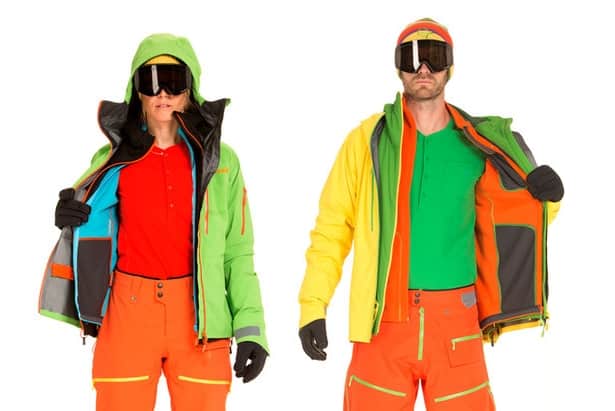
Dressing in layers is like an unwritten winter dressing rule. This is one of the best ways of tackling the unpredictable winter weather. It offers the flexibility of shedding or adding layers depending on your activity, location, and the weather. For instance, mountain peaks are known to be very windy and sometimes extremely cold while the base could be a little warmer. This means that you will need to adjust the warmth and the protection of your body as you go. Having a fixed attire may leave your either too cold or overheated at different points. Layering is best for the most important winter clothing, jackets and pants.
Here are other reasons why one should consider dressing in layers
- Layers offer you the warmth and ventilation that you need to stay warm and dry when out during winter.
- As mentioned above, it gives you the flexibility of customizing your gear depending on the condition you find yourself in.
- Every layer has its function. The protective outer layer protects you from harsh weather elements, the middle layer insulates, while the base layer is the moisture-wicking layer. Ultimately, it takes all three to have maximum comfort out in the snow and this is the most important aspect of enjoying any activity you intend to be involved in.
Elements of layering
Fundamentally, there are three layers.
- The base layer functional for wicking moisture
- The middle layer functional for insulation
- The outer layer functional for protection from weather elements
The fourth layer, known as the fleece layer, provides extra protection in extreme weather.
1. The base layer
The base layer is the innermost layer which comes into direct contact with your skin. Its main function is to wick moisture (perspiration) away from your skin leaving you dry, warm, and comfortable. When choosing a base layer, three things come to mind:
Fit. A good fit is important since this determines how effective your wick moisture away from your skin.
Weight. With weight, it is important to strike a balance between comfort and warmth. Essentially, the weightier the warmer and the thinner, the more effective the fabric will wick moisture.
Type of material. Different materials have different moisture wicking capacities. The most popular base layer materials are wool (specifically merino wool) and synthetic. While wool is generally warmer, heavier, and highly breathable, it does not wick moisture as effectively as synthetic material. Secondly, wool tends to be more expensive and cannot be machine washed since it will shrink.
Synthetic material, on the other hand, is cheaper, lightweight, and has an excellent moisture wicking property. On the con, however, it is not as warm as wool. It is not advisable to go for cotton material since cotton tends to absorb moisture and remains wet. Base layers can be lightweight, medium weight, or heavyweight. Heavyweight base layers are best for extremely harsh temps with low activity levels while the opposite is true for lightweight base layers.
2. Mid (insulating) layer
The middle layer is the layer that sits between the base and the outer layer. Its function is to insulate your body from the harsh cold and transfer moisture from the base layer away from your body. A mid layer could be anything from a sweater, vest, sweatshirt, to a shirt. In essence, you should be able to wear it without feeling the additional weight.
The best and most popular mid layer material is fleece since it has excellent heat retention properties making it warm. It also quite breathable and dries pretty fast too. Fleece also gives you the chance to choose the weight of your layer so you are comfortable and not overburdened.
Wool also makes good mid layer fabric option because of its great insulation, antibacterial, and high breathability properties. Down is equally good, however, it is best suited for the dryer locations since it is not the best when soaked in water.
Cotton still remains a no-no.
3. Softshell (fleece) layer
For the harsher weather, some skiers or snowboarders opt for an additional insulation layer just beneath the outer layer. While fleece is usually the best option, you may already be having it on as your mid-layer. A soft shell jacket makes a great option since it is light and warm.
In light wet weather, some people prefer to wear a soft-shell jacket on its own. In this case, the jacket should be highly breathable and water repellent.
4. Outer shell layer
Ideally, the outer shell is what covers all things on the inside. It is also the protective layer. Therefore, it needs to be large enough to accommodate all the layers you intend to have on the inside while still protecting you from weather elements on the outside.
The outer shell can either be insulated or uninsulated.
- Uninsulated shell. The uninsulated shell is just that, uninsulated. Its main function is to keep you dry and block off snow, wind, and rain from penetrating through to the inner layers. They are not the best if warmth is your priority.
- Insulated shell. These jackets are designed to offer you maximum warmth and comfort. Insulation materials could be down or synthetic with the latter being the most versatile and popular. Most people are forced to make a choice between having a mid layer or an insulated outer shell. The insulated shell is generally bulkier than the middle layers which you could easily shed off when there is a need to do so. However, it tends to be the better option in extreme weather.
Properties of the outer shell
- Waterproofing ability. A waterproof jacket offers complete protection from rain thanks to its fully taped seams and a waterproof coating. A water-resistant jacket, on the other hand, has a water repellent coating that lets water droplets slide off on the surface of the jacket rather than penetrate. However, its seams are not fully taped so some water could still penetrate through areas like the zip.
- Versatile. Get a shell that can be used in several different conditions and be customized to meet the requirements of unpredictable changes in weather.
- Breathability. Breathability is crucial to any winter clothing. This is the aspect that makes it possible block off precipitation from penetrating through your cloth from the outside and still letting perspiration from the inside to escape outside leaving you dry and well ventilated.
- Venting. A vent is an opening in your clothing that allows cool air to circulate to prevent you from overheating. The most common form of venting in jackets are the underarm vents designed to let out hot air and let in cool air from the outside. This way, you don’t have to open your main zippers to cool off. Some vents are lined with mesh while others are made with zippers that you open or close as and when needed.
- Pockets. Pockets are great organizers. They help you have easy access to items anywhere you are. Ideally, the more the better.
Winter pants
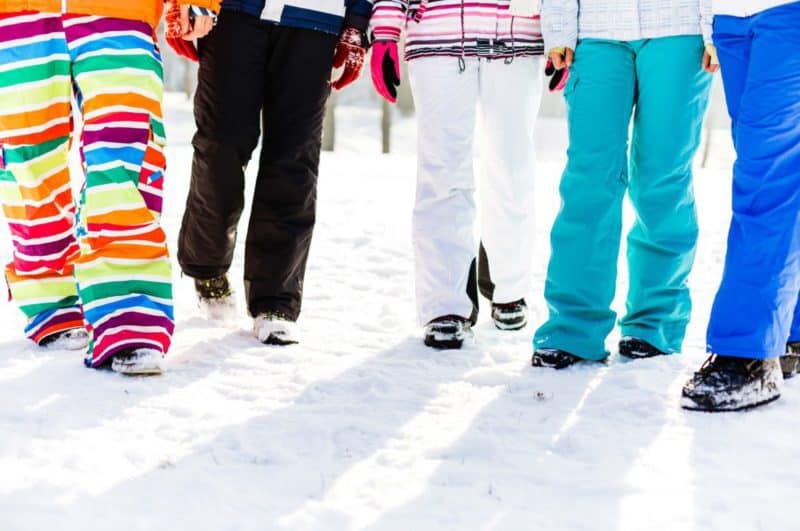
Pants are part of the most crucial winter clothing. Just like jackets, pants need to be well fitting, warm enough, breathable, and waterproof. It would be a good thing if they could extend down to cover your boots so that no part of your lower is exposed to the harsh winter weather.
Choose between insulated or soft shell ski pants depending on your situation. Insulated pants typically have two layers, the outer shell along with an inner insulating layer. Softshell pants, on the other hand, are highly breathable and are made of a soft forgiving fabric if you prefer to have your freedom in high-energy winter activities. However, they are more suited to drier conditions.
Winter socks
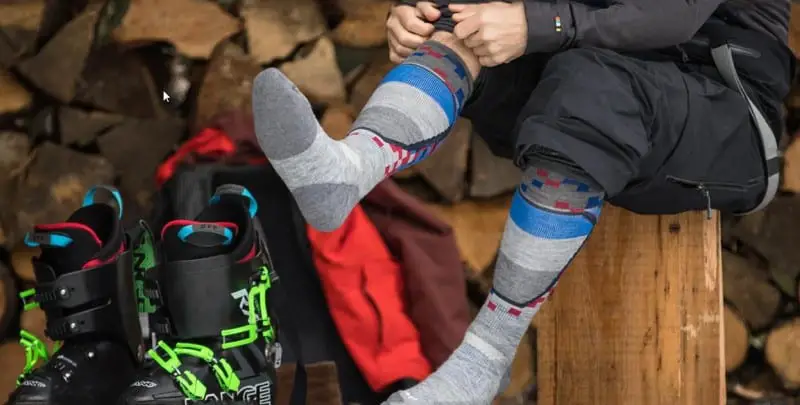
When it comes to socks:
Synthetics are better. Materials like polyester, acrylic, nylon, and merino are incredibly warm and come with excellent moisture wicking properties. This is especially important to your feet since the bottom area tends to sweat more than other parts of your body.
Comfort and support are essential. Quality ski and snowboarding socks are padded around the shins and toes to provide maximum support, cushioning, and comfort. Some are reinforced around the heels.
Thin versus thick. For socks, thinner is better particularly around the top area of your feet to allow blood to circulate around your toes for consistent warmth. They are also breathable. Thick socks tend to lock in moisture which if the socks absorb, leave your feet uncomfortably cold.
Have them fit snugly. Some socks are lined with an elastic material allowing them to fit you snugly and these are actually the best.
Gloves/mittens
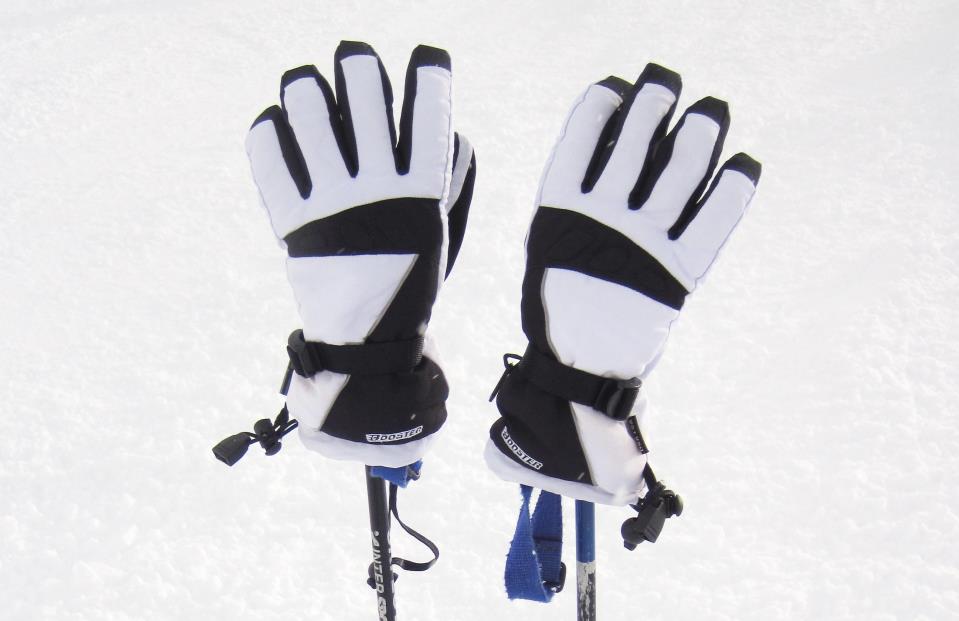
Just like your toes, your fingers need maximum protection. Actually, fingers need more protection because unlike toes, they like the face, are constantly exposed to the biting winter cold.
There is a difference between gloves and mittens. Gloves are designed with separate finger compartments just like the hand thereby offering better articulation. Mittens, on the other hand, are warmer since the fingers are not separate. If you are involved in sporting activities like cross-country skiing which involve more handling, then gloves will be the better option. Mittens are best for activities like skiing where you only need to hold ski poles and you are good to go. For extra warmth, consider adding a layer of liners for your gloves.
To get the right gloves or mittens for your activity, consider insulation. The best material for gloves and mitts are down and synthetic fabrics obviously because they are lightweight and breathable.
Neck protection
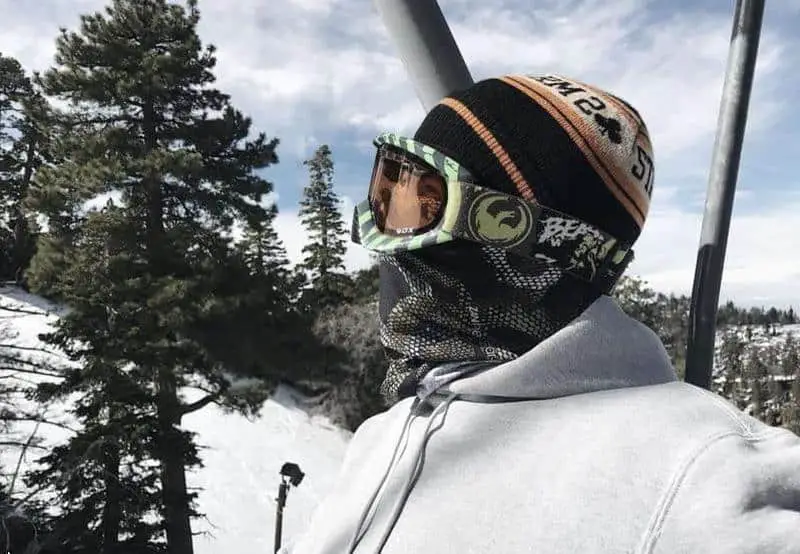
A gaiter, also known as a neck warmer, is essential for keeping the neck area warm. Gaiters are designed like tubes to allow you to pull them up your face over or just below the nose to protect both your face and neck in freezing or windy conditions.
Bottom line, gaiters are way better than scarves and will never feel cumbersome putting on. Just be sure to get a quality gaiter designed specifically for skiing. One that will wick moisture while keeping you warm and comfortable.
Helmet
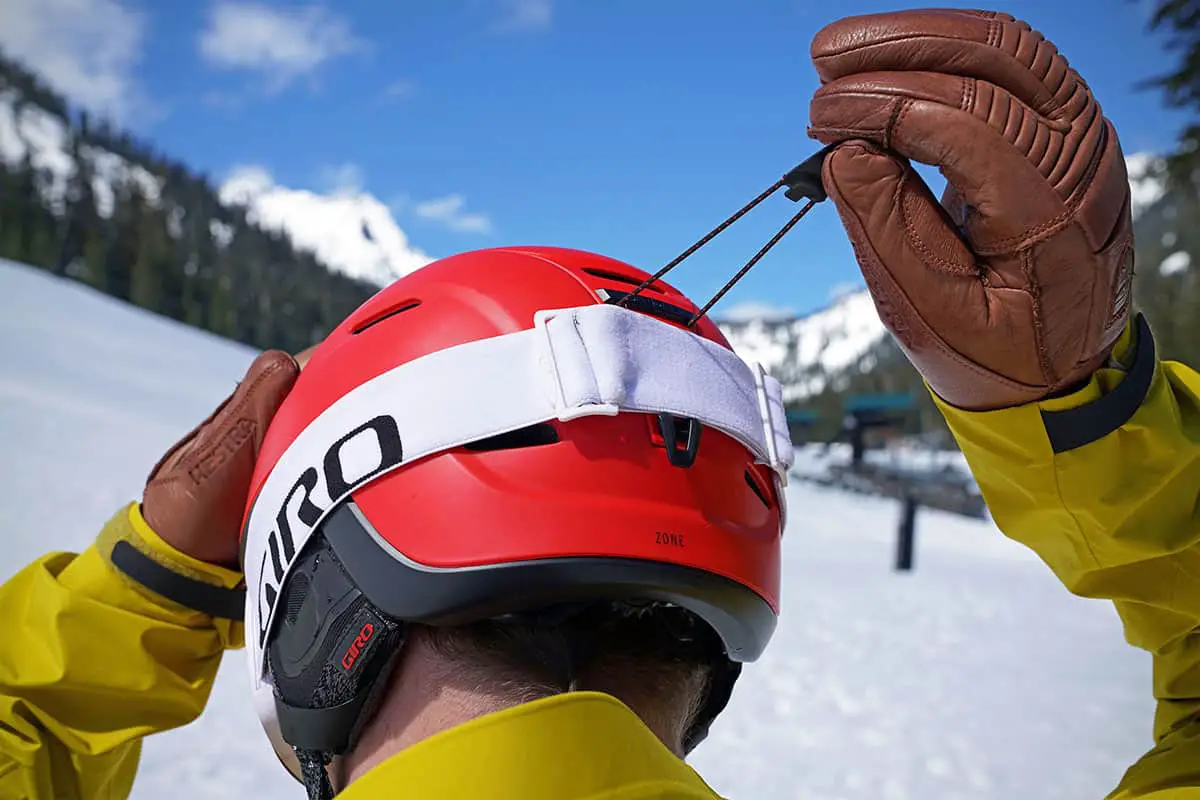
Helmets offer protection not only from weather elements but also from injury. Therefore, when selecting one, consider its ventilation capacity and size. A helmet that fits well will sure add to your enjoyment during winter. Most other features like brims and vent covers are more of personal preference.
Goggles
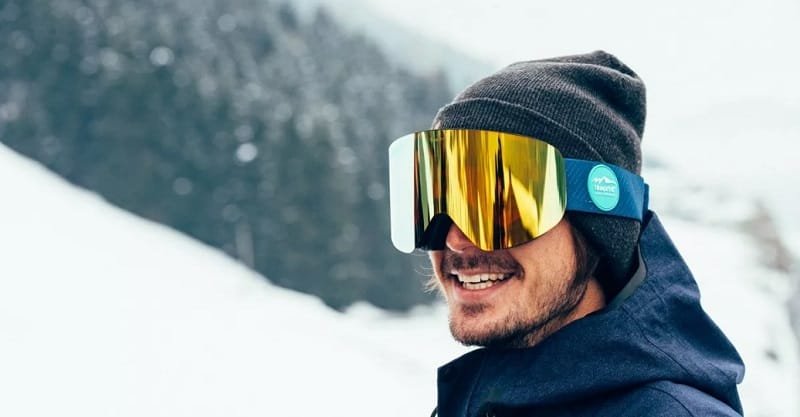
Goggles are crucial eye and face protectors that will not fit well unless they are compatible with your helmet. It is advisable to carry your helmet when going to purchase you goggles to be sure that they are compatible with each other.
A good pair of goggles should be versatile enough to adapt to different conditions. For instance, one with replaceable lenses will let you swap lenses to accommodate varying light conditions.
Secondly, look for lenses with UV protection because the higher you go the stronger the ultraviolet rays. To lower the intensity of the sun’s glare, polarized lenses will come in handy.
Important tips
- Temperatures below 5° demand that your extremities be adequately protected lest you suffer from hypothermia. These include your fingers and toes.
- Temperature between -5° and -10° is typically too extreme for a single-layered jacket. Invest in a double or triple layer jacket and/or a merino wool base layer to keep yourself warm and comfortable.
- Avoid white color for your outer layer. This is because it is the same color as snow and so greatly hampers visibility.
- If you intend to venture into fresh powder, it is not a bad idea to consider a onesie. They protect your entire body without leaving room for exposure.
- Helmet liners can be Godsent on overly freezing conditions when your head catches the chill even with your helmet on.
Conclusion
Shopping for and deciding which winter clothing to wear can be a tall order. However, it makes the difference knowing what’s right for the weather condition in your intended destination and what’s right for you. Most importantly, think breathability, a good fit, warmth, and ultimately comfort as this are the very factors that will determine how well you enjoy your long awaited winter getaway. Finally, being able to adapt to unpredictable changes in weather should make you even more comfortable.







